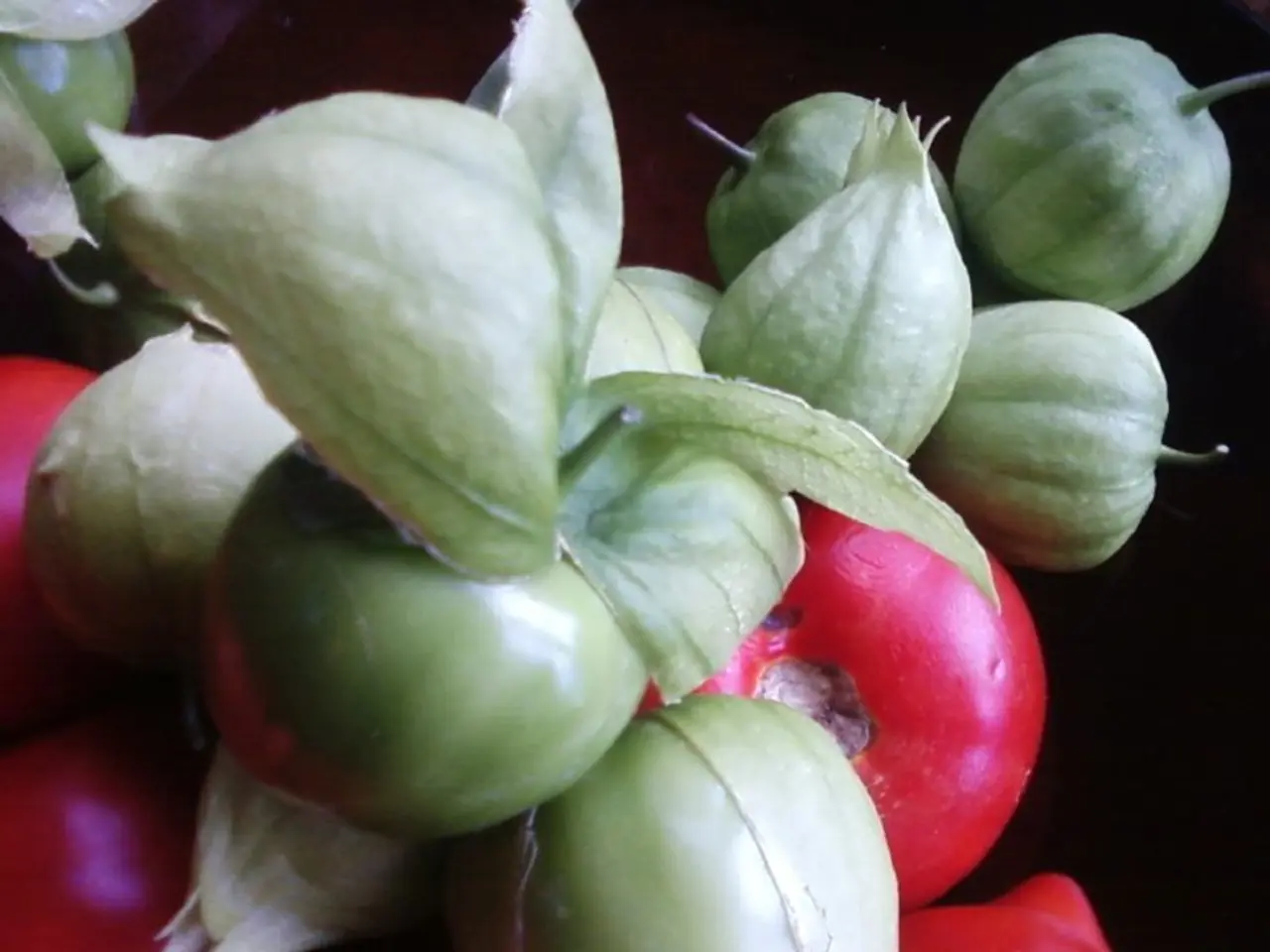Debating the Nutritional Validity of Veggie Crisps: A Look into Their True Garden-Fresh Value
Veggie crisps, a popular snack trend, are generally a healthier choice compared to traditional potato chips. Here's a breakdown of why veggie crisps might be a better option for those seeking a nutritious snack.
Firstly, veggie crisps tend to have significantly less fat than their potato chip counterparts. For instance, DJ&A Veggie Crisps contain 30% less fat than regular potato chips, while Tasty Thins Veggie Crisps report 40% less fat.
Secondly, veggie crisps can be lower in calories per serving. For example, Tasty Thins offer about 130 calories per serving, with only 6g total fat, compared to a comparable serving of kettle-cooked potato chips which often contains around 150 calories and 9g fat.
Veggie crisps are usually made from a variety of vegetables like chickpeas, carrots, sweet potatoes, peas, and more, often free from artificial flavours and preservatives. In contrast, regular potato chips primarily use potatoes fried in oil, sometimes with added salt and fewer nutrients.
While both snack types contain sodium, veggie crisps can be formulated with moderate amounts. For example, Tasty Thins contain 230 mg sodium per serving. Sodium levels vary by brand and flavour.
Veggie crisps may offer small amounts of protein and minerals such as iron and potassium, whereas regular potato chips have minimal protein and micronutrients beyond potassium.
However, it's essential to note that not all "veggie" snacks are equally healthy. Some "veggie straws" are largely potato-based with added vegetable powders and still contain high fat and salt levels, making them less beneficial than whole-vegetable crisps.
In summary, veggie crisps are typically a healthier snack choice due to lower fat, fewer calories, added fiber, and vegetable content, provided they are made primarily from real vegetables without excessive additives or fillers. Always check the nutrition label for detailed comparison as formulations vary by brand and product.
For those who prefer store-bought veggie crisps, it's recommended to opt for brands with the first ingredient being a whole vegetable, "baked" or "air-fried" options, and aim for less than 150mg of sodium per serving.
Creative flavour ideas for veggie crisps include spicy (cayenne + lime), cheesy (nutritional yeast + garlic), herby (rosemary + sea salt), and sweet (cinnamon + coconut sugar).
Three simple methods for making homemade veggie crisps include oven-baking, dehydrating, and using an air fryer. A method for making veggie crisps using an air fryer is provided, best for kale, carrots, and parsnips.
Another method for making veggie crisps, suitable for long-term storage and requiring no oil, is using a dehydrator. The steps involve slicing veggies thinly and dehydrating at 60°C for 6-8 hours.
A pro tip for dehydrator veggie crisps is to soak root veggies in cold water for 30 minutes before baking to remove excess starch for extra crispiness.
The final verdict on whether to eat veggie crisps is that they can be a good choice if brands with whole veggies and minimal additives are chosen, they are baked or air-fried at home, and eaten in moderation.
In conclusion, veggie crisps present a healthier snack option compared to regular potato chips. However, it's crucial to be aware that not all "veggie" crisps are healthy, and overconsumption of fried, salted versions should be avoided. The healthiest option for veggie crisps is to make your own or check labels for minimal additives.
Sources: [1] Tasty Thins Veggie Crisps Nutrition Facts:
Science shows that veggie crisps can be a healthier choice for snacking compared to traditional potato chips, given their lower fat, fewer calories, and nutrient content. In health-and-wellness and fitness-and-exercise sectors, making informed decisions about nutrition, like choosing veggie crisps over potato chips, is essential for maintaining a healthy-diet.




